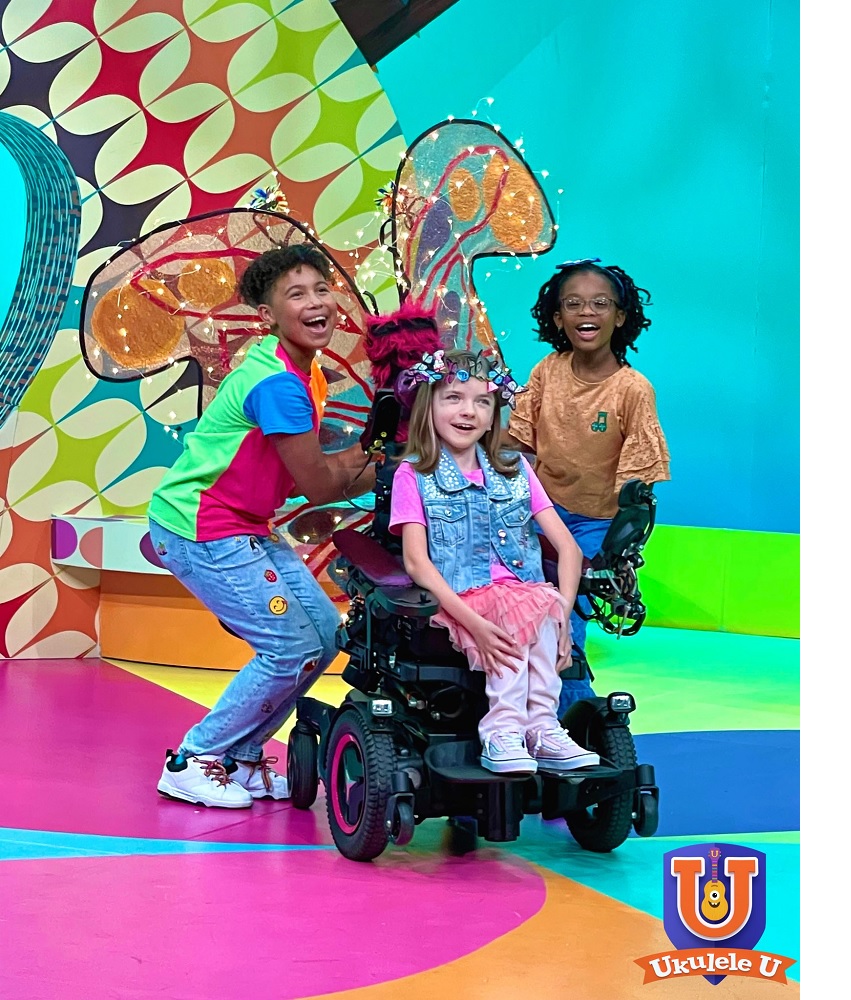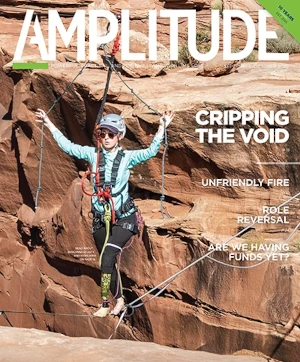
We were excited to learn this week that bilateral amputee actor Katy Sullivan is headed to Broadway. She’ll be reprising her role of Ani in the Pulitzer Prize-winning Cost of Living at the Samuel J. Friedman Theatre this fall. (Look for more in our upcoming print edition.)
Incredibly enough, Sullivan will be only the second amputee (and first woman amputee) to appear on Broadway. The first, David Connolly, appeared there in the late 1980s in a revival of Shenandoah. He surely didn’t think at the time that it would take 35 years for another performer with limb difference to get the same opportunity. And he’s doing everything he can today to ensure that, 35 years from now, entertainers with disabilities are commonplace instead of exceptional.
One of Canada’s most highly decorated theatrical producers and educators, Connolly is working at both ends of the talent pyramid. Earlier this month he was focused on the pinnacle, chairing a panel of upper-echelon performers with disabilities at the annual BroadwayCon gala. But he’s always trying to have an impact at the foundational level, and Connolly’s latest effort in that realm is a kids’ show titled Ukelele U airing on CBC (Canada’s answer to PBS).
“I was very clear from the first meeting that we would have a disabled cast member, which that network has never had as a recurring character before,” says Connolly. “She’s as talented as all the other cast members; she just happens to be in a wheelchair. And some other kid in a wheelchair is going to see her on that television show, and something will spark.”
We caught up with Connolly not long ago to talk about what those sparks might build into. You can follow him on Twitter @DavidConnollyTO and on Instagram @davidwconnolly. Our conversation is edited for clarity and length.
Where do things stand today in terms of disability representation in the entertainment industry?
My view is that this wave of inclusion is happening. It’s no longer just an idea; it is happening. And it’s kind of epic in size; the dam has burst. Part of my work as an educator is to prepare people for that wave. We need to make sure young people are trained and ready for these opportunities. Everyone’s chomping at the bit to to make this shift, and we’re not really prepared for it because talented actors who can make the change happen haven’t been welcomed in training institutions yet.
When you say the dam has burst, what are some of the things you’re seeing that give you that sort of encouragement?
In theater we had Ali Stroker, who won the Tony for Best Actress [in a Musical] a few years ago—that was epic. She’s the first performer in a wheelchair to appear on Broadway. Television is definitely evolving, too. They’re casting disabled people in non-disabled roles, and they’re creating disabled characters where the storyline doesn’t revolve around the disability. They’re a doctor who’s an amputee, or they’re a blind single mother raising her kids. But no one’s focused on the disability, because that’s not the core plot point.
In addition to Stroker, are there other performers with disabilities who you’re excited about?
Sydney Mesher is a dancer who was born with a congenital limb difference, missing her hand. She became the first Radio City Rockette to have a visible disability. But that’s never in the conversation. It’s about her talent. She’s just the best dancer in whatever room she’s in.
Evan Ruggerio gives me lots of hope. He played the Beast last Christmas in Beauty and the Beast. And then there’s an actor named John McGinty, who was cast as Quasimodo in the Hunchback of Notre Dame. He’s a deaf actor, and the character of Quasimodo was deaf, so he actually pitched the directing team. He saw they were doing auditions, and he said to them: “You know . . . .” So they cast him. And he’s been on Broadway a couple of times now.
Now that’s really interesting. He was proactive in asserting his distinctive value as a performer with a disability, and that value was actually perceived. Do you feel there’s more latitude these days for disabled performers to be assertive in the way?
I would like to see more people being proactive about it. But that shift needs to happen in the entire system. Agents and casting directors and managers need to be willing to go to bat with a network to say, “Your show is more interesting when you have a character navigating the world in a different way than people expect.” It just makes it better—always. No exceptions.
But then you need to deliver someone as talented as John McGinty. So there really needs to be that high-level training to prepare the next crop of actors.

Where does that start? Does it start with people with disabilities betting on their talent and getting that training, even though the roles might not be there yet? Or does it start with training programs recruiting and nurturing that talent?
The responsibility is shared. Institutions need to radically shift their recruitment procedures and see the value of bringing these performers into their programs. Here’s an example. Our theatre company has a youth program, and we had a blind girl in the cast of Joseph and the Amazing Technicolor Dreamcoat. Very talented. She applied to a college musical theatre program here in Canada, but they didn’t take her, because the dance department didn’t think they could accommodate her. I went to the president and said, with as much grace as possible: “I understand how maybe some people who didn’t know better thought this was in [the student’s] best interest. But if a qualified student with a disability applies to your program, you say ‘Yes’ and you figure the rest out later. That’s just got to be how it goes.”
They reversed the decision, but the girl wasn’t interested anymore. She’s moved on. So that was a swing and miss, but hopefully also a chance to learn and grow.
Is there any college out there who’s doing it the right way, that might serve as a model?
Sheridan College, which is probably the foremost musical theater program in Canada, seems to be doing it right. There’s an above-knee amputee there who’s in his third year, and they’re making it work. It takes extra effort and a little extra money, because sometimes he needs a special coach or whatever the accommodation is. But you don’t need to rebuild your whole program. You adapt.
I’ve talked to a fair number of performers who understand that a pipeline really is not just going to materialize out of thin air. It will require some actual focus and some decisions to be made. And you can’t wait until students get to college. Even high school’s too late. You have to expose them in elementary school, not only to the value of arts education but to the possibility of belonging. Too often teachers will reach out to me—dance teachers, especially—and say, “I have this kid with a disability, what do I do? How do I—” And I just say, don’t do anything. Calm down. They will tell you if they need something.
So I take it Ukulele U can fit into that pipeline. Is that is that an explicit objective of the show, or an incidental benefit?
It depends who you ask. For me, it’s explicit. But for other creators involved in it, they might have a different focus. Melanie [Doane] wrote all the songs, and her focus is the universal language of music, how it bonds a community, the therapeutic mood-shifting power of music. So she’s not looking at it through a disability lens at all. Another producer is looking at it through a racial integration lens. So it depends who you ask. But I think if we make a safe space for kids to discover who they are and who they can be, the rest will take care of itself.





